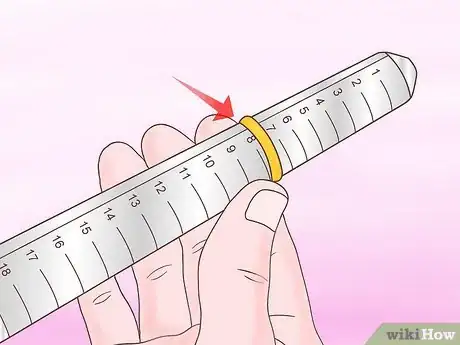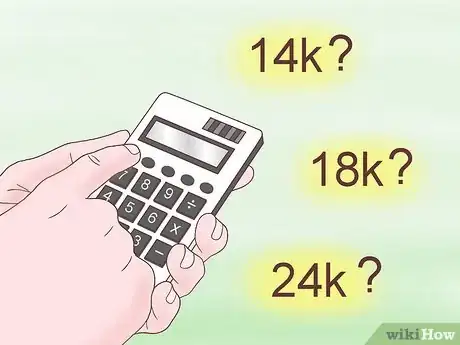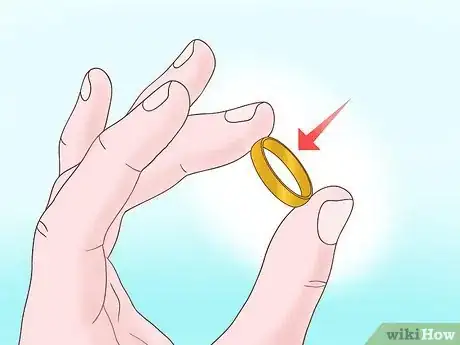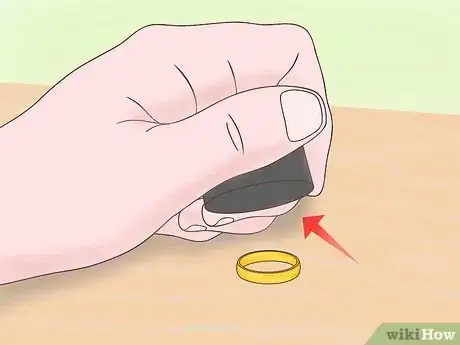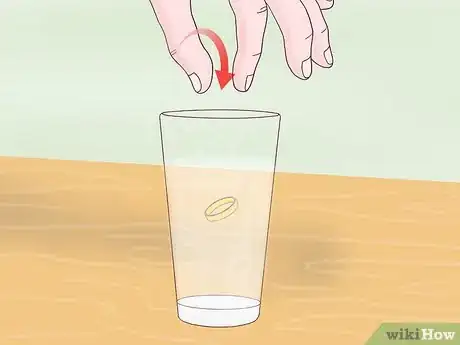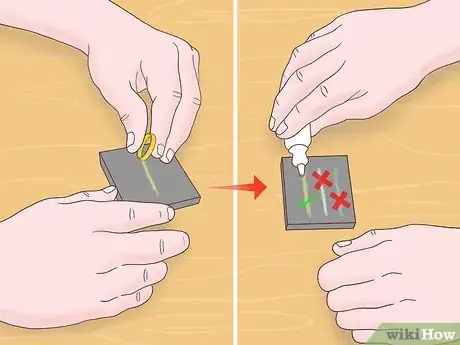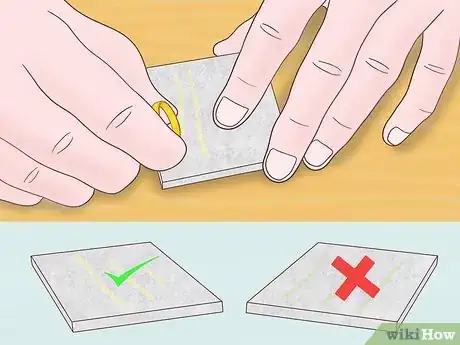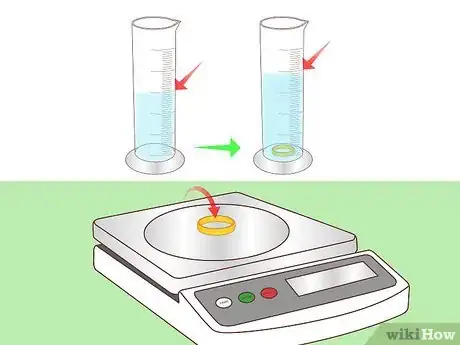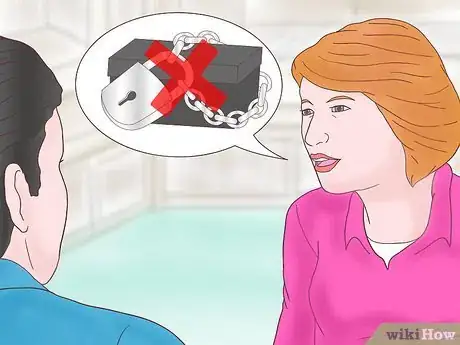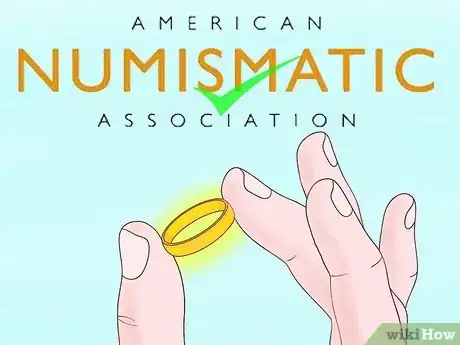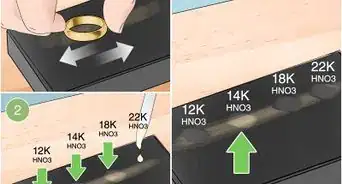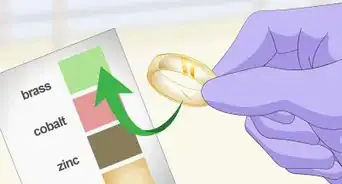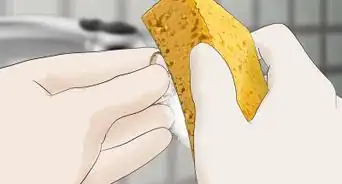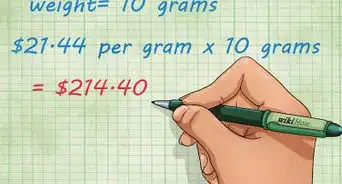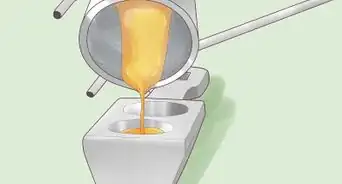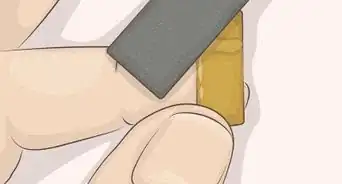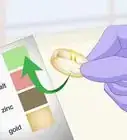This article was co-authored by Kennon Young. Kennon Young is a Master Gemologist Appraiser and the Owner of Vermont Gemological Laboratory in Burlington, Vermont. With over 20 years of experience in the industry, Kennon and his team specialize in handmade engagement rings, wedding bands, and custom jewelry. He attended the Revere Academy of Jewelry Arts, the Gemological Institute of America, and the Rhode Island School of Design Extension. He is a Jewelers of America (JA) Certified Bench Jeweler Technician and received the highest credential in the jewelry appraisal industry, the ASA Master Gemologist Appraiser, in 2016.
There are 8 references cited in this article, which can be found at the bottom of the page.
wikiHow marks an article as reader-approved once it receives enough positive feedback. In this case, 95% of readers who voted found the article helpful, earning it our reader-approved status.
This article has been viewed 218,329 times.
The value of gold constantly changes which results in the precious metal being more susceptible to counterfeiting. It’s important to know how to spot fake gold to ensure you get what you’re paying for. There are number of ways to distinguish between real gold and fake gold.
Steps
Observing the Gold
-
1Weigh the gold. Gold is a very dense metal, so it will be heavier than it looks. Use a jeweler’s scale to determine the exact weight of the gold.[1]
- Gold bars typically have their weight inscribed on them. Make sure the actual weight matches this inscription.
- Many gold coins and pieces will also have their weight stamped on them. Check that the weight is accurate.
-
2Measure the size. Gold should be small compared to its weight. Fake gold pieces may have a heavier weight but also be too large for the weight to match the weight of real gold.
- Check the diameter and thickness of any gold coins you’re considering buying. The specifications for collectible coins can be found in numismatic guides or online.
- Gold bars are sold in many different sizes, but the size of a standard gold bar is 7”x 3 ⅝” x 1 ¾” and weighs 400 ounces or 27.5 pounds.
- Determine the actual volume of irregular objects, such as rings, by placing them in a graduated cylinder accurate to .1 milliliters(mLs). Place 20mLs of water in the cylinder and add the object you wish to test. Record the difference in water level. 1 cubic centimeter is equal to 1 mL.
Advertisement -
3Calculate the density of your gold. Density is a measurement of mass per volume. Once you know the weight of the gold and its volume, you can easily calculate density by dividing the mass by the volume.[2]
- 24 karat gold has a density of 19.3 grams per cubic centimeter.
- 18 karat gold has a density of 15.6 grams per cubic centimeter.
- 14 karat gold has a density of 13.1 grams per cubic centimeter.
-
4Check for a stamp. Gold will be stamped with the karat weight or purity of the gold as well as the manufacturer’s name.[3] The stamp will typically be on the clasps of jewelry.[4]
- Typical karat markings are 10K, 14K, and 24K
- Some counterfeit gold will have a karat stamp on it, but rarely have a manufacturer’s name.
-
5Look for discoloration on the metal. As a precious metal, gold does not tarnish or rust. If you see any discoloration on the metal, it is a sure sign that it is not pure gold.[5]
Testing the Gold
-
1Test the magnetism. Gold is not magnetic, however, many metals used to make fake gold are. Get a magnet that is stronger than a typical refrigerator magnet to perform this test.
- Hold the magnet slightly above the gold piece.
- Observe if the gold is attracted to the magnet and if the magnet can pick up the piece of gold.
-
2Perform the float test. You can test whether or not the piece of gold floats to determine if its real. Real gold is dense and will sink, but many pieces of fake gold will float.[6]
- Get a glass large enough to fit the piece of gold, and fill it with water.
- Drop the gold piece into the water, and observe it.
-
3Complete the nitric acid test. This is a good test to use on scrap gold, but not recommended for jewelry you plan to wear or resell. This test uses nitric acid to see if the gold has a chemical reaction with it. One hundred percent gold will have no reaction to the nitric acid.[7]
- Put on safety goggles and gloves before working the the nitric acid.
- Make a light, small scratch on the gold using a nail file.
- Use an eyedropper to apply one drop of nitric acid to the scratch on the gold.
- If the liquid turns greenish, the item is probably mostly another metal like zinc and plated with gold. If the liquid turns a milky color, the item most likely is mostly sterling silver and plated with gold.
- If you're nervous about using nitric acid, you could try a vinegar test instead. While slightly less accurate than nitric acid, vinegar is a milder acid that will produce similar results.
Spotting Fool's Gold (Pyrite)
-
1Perform a streak test. Rub a sample of the suspected gold or pyrite on an unglazed ceramic tile. A colored streak will be left behind similar to a pencil mark.
- Fool's gold or pyrite will leave behind a greyish streak.
- Real gold will leave a shiny golden streak.
-
2Test the density of the sample. Determine the weight and volume of your sample. Use a digital scale to weigh the sample and record the mass in grams. Place the sample in a graduated container filled with water to determine the volume of displaced water. The volume the water level rises will indicate the volume of your sample (1 milliliter is equal to 1 cubic centimeter). Divide the mass by the volume.[8]
- Pyrite has a density of 4.8-5 grams per cubic centimeter
- Pure gold has a density of 19.3 grams per cubic centimeter.
-
3Do a scratch test. The hardness of a mineral can be determined by its ability to scratch or be scratched by an object. Try to scratch a copper penny with your suspected gold.
- Real gold will not scratch a penny and can be scratched by the penny.
- Fool's gold or pyrite will scratch a penny and cannot be scratched by the penny.
Buying Gold
-
1Ask for the item’s melt value. Gold jewelry and coins can be melted down to extract the metal from the piece. If you are told that the melt value exceeds the weight of the item, you should be wary of the purchase because it may be a gold plated or counterfeit piece.
-
2Avoid purchases delivered to a “secured location”. Some business trick consumers into buying gold by saying that the purchase will be stored in a high security location for safety. In many instances the gold product does not actually exist or is of an inferior quality.[9]
- Always inspect your gold before making a purchase.
- Rent or invest in a safety deposit box or safe to protect your gold.
-
3Know the current market value for gold. Gold price is based on its weight. The price of an ounce of gold fluctuates regularly. Reputable dealers will provide you with the current market value of an ounce of gold when making a purchase.
- Expect mark-ups when purchasing coins or jewelry to cover the artistic or collectible value of the item.
- If the price of an item is below the market price for its weight you should avoid the purchase.
-
4Purchase certified gold coins. American Numismatic Association (ANA) provides grading and certification of collectible gold coins. Make sure that any gold coins you purchase have been assessed for grading by the ANA.[10]
Expert Q&A
Did you know you can get expert answers for this article?
Unlock expert answers by supporting wikiHow
-
QuestionHow can you tell if it's fake gold?
 Kennon YoungKennon Young is a Master Gemologist Appraiser and the Owner of Vermont Gemological Laboratory in Burlington, Vermont. With over 20 years of experience in the industry, Kennon and his team specialize in handmade engagement rings, wedding bands, and custom jewelry. He attended the Revere Academy of Jewelry Arts, the Gemological Institute of America, and the Rhode Island School of Design Extension. He is a Jewelers of America (JA) Certified Bench Jeweler Technician and received the highest credential in the jewelry appraisal industry, the ASA Master Gemologist Appraiser, in 2016.
Kennon YoungKennon Young is a Master Gemologist Appraiser and the Owner of Vermont Gemological Laboratory in Burlington, Vermont. With over 20 years of experience in the industry, Kennon and his team specialize in handmade engagement rings, wedding bands, and custom jewelry. He attended the Revere Academy of Jewelry Arts, the Gemological Institute of America, and the Rhode Island School of Design Extension. He is a Jewelers of America (JA) Certified Bench Jeweler Technician and received the highest credential in the jewelry appraisal industry, the ASA Master Gemologist Appraiser, in 2016.
Master Gemologist Appraiser
Warnings
- Don’t perform the nitric acid test on any gold jewelry you are sentimental with or play to wear.⧼thumbs_response⧽
- Use protective gear like goggles and gloves when performing the nitric acid test.⧼thumbs_response⧽
- Be leery of gold that is priced way under the price of other similar pieces. The current market price of gold changes daily, compare your purchase weight to the market price. If there is a large difference, it should raise red flags about the purchase.⧼thumbs_response⧽
References
- ↑ http://www.jmbullion.com/investing-guide/types-physical-metals/real-vs-fake/
- ↑ http://www.attawaygems.com/NMFG/Gold_data.html
- ↑ Kennon Young. Certified Jeweler. Expert Interview. 11 September 2019.
- ↑ http://www.sbcgold.com/blog/test-gold-5-simple-ways-spot-fake-gold/
- ↑ Kennon Young. Certified Jeweler. Expert Interview. 11 September 2019.
- ↑ http://www.sbcgold.com/blog/test-gold-5-simple-ways-spot-fake-gold/
- ↑ http://www.goldkingsonline.com/how-to-tell-if-gold-is-real
- ↑ http://www.webmineral.com/data/Pyrite.shtml
- ↑ http://www.consumer.ftc.gov/articles/0135-investing-bullion-and-bullion-coins
- ↑ https://www.usmint.gov/collectorsClub/?action=ANACoinGrading
- ↑ Kennon Young. Certified Jeweler. Expert Interview. 11 September 2019.
About This Article
If you’re not sure how to spot fake gold, check the piece for a stamp, which will typically be on the clasp, or inside the band if it’s a ring. If the piece is real gold, the stamp should bear a manufacturer’s mark and a karat marking, such as 14K or 24K. Fake gold may bear a karat mark, but will not have a manufacturer’s mark. Also, if the piece is discolored, or if your skin turns green when you’re wearing the jewelry, it is not real gold. For tips on spotting fool’s gold, keep reading!

